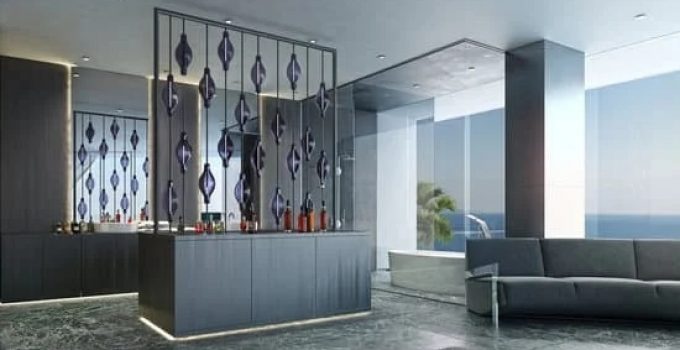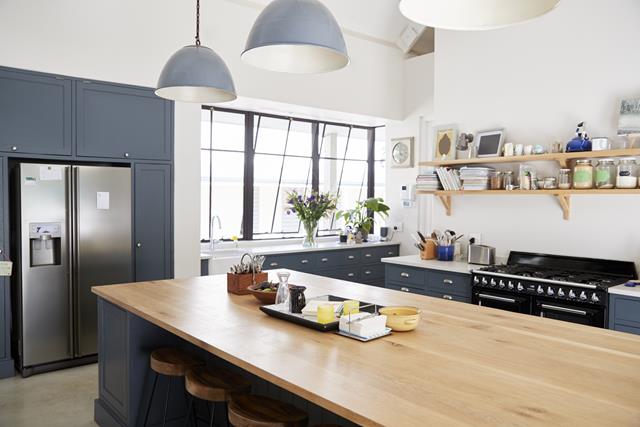Are you wondering how to decorate your home in Gothic Revival style? Gothic Revival is a design aesthetic that brings the elements of medieval architecture and design into modern homes, creating a unique and captivating atmosphere. This style is characterized by its intricate details, pointed arches, and ornate decorations that evoke a sense of mystique and grandeur.
Originating in the 18th century as a response to the industrial revolution, Gothic Revival style sought to revive the architectural styles of the Middle Ages. Drawing inspiration from cathedrals and castles, this design movement embraced the use of dramatic tracery, vaulted ceilings, and gargoyles to create a sense of drama and elegance in interior spaces.
To successfully decorate your home in Gothic Revival style, it is essential to understand the key elements that define this aesthetic. From choosing the right color palette to selecting furniture pieces and incorporating architectural features into your design, every aspect plays a crucial role in creating an authentic Gothic Revival atmosphere. By following these tips and exploring DIY projects, you can transform your home into a captivating sanctuary that reflects the beauty and mystery of this timeless design style.
Understanding the History and Origins of Gothic Revival
The Gothic Revival style, also known as Victorian Gothic or Neo-Gothic, emerged in the 18th century as a response to the neoclassical architecture that was dominant at the time. This architectural and design movement drew inspiration from medieval Gothic architecture, with its pointed arches, decorative tracery, and intricate ornamentation. The Gothic Revival style aimed to evoke a sense of romanticism and nostalgia for the past, while also incorporating modern innovations and technologies.
To truly embrace the Gothic Revival aesthetic in your home decor, it is important to understand the history and origins of this movement. The roots of Gothic Revival can be traced back to the writings of architectural theorists such as Horace Walpole and John Ruskin, who advocated for a return to the architectural forms of the Middle Ages. The style gained popularity during the 19th century when architects like Augustus Pugin began incorporating Gothic elements into their designs.
When decorating your home in Gothic Revival style, consider incorporating key elements such as pointed arches, stained glass windows, and ornate carvings. These architectural features can be complemented by a color palette that includes rich jewel tones like deep reds, purples, and blues.
Dark woods like mahogany or oak are often used for furniture pieces to enhance the dramatic and opulent feel of a Gothic Revival home. Additionally, you can add decorative accessories such as tapestries, candelabras, and ornate mirrors to complete the look.
- Researching about Gothic architecture
- Learning about famous Gothic Revival architects
- Exploring different design elements unique to this style
Key Elements of Gothic Revival Home Decor
Gothic Revival home decor is characterized by its dramatic and ornate style, drawing inspiration from medieval architecture and design elements. When decorating your home in the Gothic Revival style, it’s important to focus on key elements that will help you achieve the desired aesthetic. From intricate details to dark color schemes, here are some essential elements to consider when transforming your space into a Gothic-inspired haven.
Gothic Archways and Pointed Arches
One of the most distinctive features of Gothic Revival home decor is the use of pointed arches, reminiscent of Gothic cathedrals. Incorporating archways into your home design, whether through doorways or windows, can instantly evoke a sense of grandeur and opulence. Consider adding decorative moldings or trims to create intricate arch designs that will enhance the overall Gothic aesthetic of your space.
Ornate Details and Carvings
To truly capture the essence of Gothic Revival style, focus on incorporating ornate details and carvings in your home decor. Look for furniture pieces with intricately carved motifs, such as floral patterns or grotesques. Additionally, consider adding decorative elements like finials, corbels, and rosettes to walls or ceilings to enhance the overall richness of the design.
Stained Glass Windows
Stained glass windows are not only a hallmark of Gothic architecture but also a key element in Gothic Revival home decor. These intricate windows add a touch of color and visual interest to any space while allowing natural light to filter through in a captivating way. Consider installing stained glass windows or incorporating faux stained glass panels into your existing windows for a truly authentic Gothic Revival look.
By paying attention to these key elements, you can successfully decorate your home in the opulent and grandiose style of Gothic Revival. From incorporating archways and carvings to adding stained glass windows, each element plays a crucial role in creating an immersive Gothic-inspired environment that reflects the beauty and drama of this historic aesthetic.
Choosing the Right Color Palette for a Gothic Revival Home
When it comes to decorating a home in Gothic Revival style, choosing the right color palette is crucial in setting the tone for the entire design. The colors used in this style often reflect the dark, moody, and dramatic atmosphere associated with Gothic architecture.
Deep and rich hues such as burgundy, navy blue, emerald green, and plum are commonly used to create a sense of mystery and elegance in a Gothic Revival home. These colors can be incorporated through wall paint, upholstery, draperies, and decorative accents throughout the space.
In addition to these dark shades, metallic accents like gold, bronze, or silver can be used to add a touch of luxury and glamour to the overall look. These metallic tones can be introduced through light fixtures, hardware on furniture pieces, picture frames, or decorative objects. When paired with the darker colors typically found in Gothic Revival decor, metallics can help create a striking contrast that enhances the overall aesthetic.
To add depth and dimension to your Gothic Revival color scheme, consider incorporating textures like velvet, silk, brocade, or tapestry fabrics in upholstery or curtains. Textured wallpaper or elaborate patterns on rugs can also contribute to the intricate and ornate look of this style. By combining these rich colors with luxurious textures and metallic accents, you can create a truly atmospheric and visually stunning Gothic Revival home that pays homage to its historic roots.
| Colors | Decor Elements |
|---|---|
| Burgundy | Velvet upholstery |
| Navy Blue | Ornate tapestry curtains |
| Emerald Green | Metallic gold light fixtures |
Furniture and Decor Pieces That Enhance the Gothic Revival Aesthetic
The furniture and decor pieces you choose play a crucial role in enhancing the Gothic Revival aesthetic in your home. To achieve the dark, dramatic, and ornate look characteristic of this style, it is essential to select pieces that reflect the Gothic Revival era’s architectural features and design elements. Here are some key items to consider when decorating your home in the Gothic Revival style.
Gothic-Style Furniture
When selecting furniture for your Gothic Revival home, look for pieces that feature intricate carvings, bold lines, and ornate details. Dark woods such as mahogany, walnut, or ebony are commonly used in Gothic Revival furniture to create a sense of luxury and drama. Opt for items like canopy beds with elaborate headboards, heavy wooden sideboards, ornately carved chairs with upholstered seats, and gothic-style cabinets to add a touch of authenticity to your space.
Decorative Accents
Incorporating decorative accents inspired by the Gothic Revival period can help tie together the overall look of your home. Consider adding stained glass windows or panels, metalwork details like wrought iron candle holders or chandeliers, tapestries featuring medieval motifs, and gothic-style mirrors with intricate frames. These pieces can add depth and character to your home while staying true to the Gothic Revival style.
Textiles and Upholstery
To enhance the gothic aesthetic in your home further, pay attention to textiles and upholstery choices. Velvet curtains in deep jewel tones like crimson or emerald green can bring rich color and texture into your space. Opt for plush velvet upholstery on sofas or armchairs to create a sense of opulence.
Consider adding throw pillows with ornate embroidery or tassels to complete the look. Mixing different textures like velvet, brocade, or damask can help create a visually dynamic space that reflects the grandeur of the Gothic Revival style.
By carefully selecting furniture pieces that embody the Gothic Revival aesthetic, incorporating decorative accents inspired by the era, and paying attention to textiles and upholstery choices that evoke luxury and drama, you can successfully decorate your home in the striking style of Gothic Revival.
Lighting Tips for Creating the Perfect Ambiance in a Gothic Revival Home
The right lighting plays a crucial role in creating the perfect ambiance in a Gothic Revival home. To achieve the dark, dramatic atmosphere characteristic of this style, consider incorporating these lighting tips into your home decor:
- Chandeliers: Opt for intricate, ornate chandeliers with dark metal finishes like wrought iron or bronze. These statement pieces can serve as focal points in rooms and add to the overall Gothic aesthetic.
- Candlelight: For a truly authentic touch, use candles or candle holders throughout your home. Placing them strategically on mantels, tables, and shelves can enhance the mysterious and romantic feel of the space.
- Gothic Sconces: Install sconces with medieval-inspired designs to complement your overall Gothic Revival theme. These wall-mounted fixtures provide ambient lighting while also adding decorative flair to your walls.
In addition to these specific lighting choices, consider the placement and intensity of your light sources to create the desired mood in each room. Soft, dim lighting can help create a cozy and intimate atmosphere, while bold, direct lighting can highlight architectural details or accent decor pieces.
Remember that natural light is also an important element to consider in a Gothic Revival home. Embrace large windows with intricate tracery designs or stained glass panels to allow natural light to filter through in a way that enhances the gothic style without overpowering it. By carefully selecting and arranging your lighting sources, you can effectively set the stage for a hauntingly beautiful Gothic Revival home decor scheme.
Whether you prefer traditional gothic-inspired fixtures or modern interpretations of this classic style, experimenting with different types of lighting can help you achieve the perfect ambiance in your gothic revival space. With careful planning and attention to detail, you can transform any room into a mysterious and enchanting haven that embraces the beauty of Gothic Revival design.
Incorporating Gothic Revival Architecture Into Your Home Design
Gothic Revival architecture is characterized by its pointed arches, steep gables, and intricate detailing reminiscent of medieval cathedrals. To successfully incorporate this style into your home design, start by focusing on the exterior elements. Consider adding elements such as pointed arch windows, decorative tracery, and steeply-pitched roofs to create that iconic Gothic Revival look. You can also add embellishments like turrets or finials for an extra touch of drama.
When it comes to the interior of your home, consider incorporating architectural details such as exposed wooden beams, vaulted ceilings, and ornate moldings to enhance the Gothic Revival aesthetic. Additionally, try to incorporate elements like stained glass windows or elaborate ironwork to further capture the essence of this historic style. Adding features like a grand staircase with intricate carvings or a fireplace with intricate stone detailing can also help bring the Gothic Revival architecture into your home design.
Incorporating Gothic Revival architecture into your home design can be a truly transformative experience that adds a sense of grandeur and drama to your living space. By paying attention to key architectural elements and incorporating them thoughtfully into both the interior and exterior of your home, you can create a truly stunning homage to this historic style.
Remember that attention to detail is key when decorating in Gothic Revival style – from the shape of windows to the texture of materials used, every element should work together harmoniously to create a cohesive look that is both striking and elegant.
DIY Projects for Adding a Gothic Revival Touch to Your Home
The Gothic Revival style is a popular choice for those who appreciate the architectural and design elements of the medieval period. If you are wondering how to decorate your home in Gothic Revival, incorporating some DIY projects can be a fun and creative way to add a touch of this unique aesthetic to your space. One simple project you can try is creating your own faux stained glass windows.
You can use translucent paint or even colored film to mimic the look of traditional stained glass. This can instantly add a Gothic touch to any room in your home.
Another DIY project that can enhance the Gothic Revival style in your home is creating your own ornate wall paneling. Using decorative molding, you can create intricate patterns on your walls reminiscent of Gothic architecture. Painting these panels in dark, rich colors like deep burgundy or forest green can further enhance the dramatic look. Additionally, consider adding wall sconces or candle holders with ornate designs to bring in that medieval feel.
| DIY Project Ideas | Description |
|---|---|
| Faux wrought iron candle holders | Create realistic-looking candle holders using black painted PVC pipes |
| Gothic arch mirror frame | Add an arch-shaped frame with intricate carvings around your mirror for a gothic touch |
| Gargoyle bookends | Sculpt gargoyle bookends from clay or polymer clay for a whimsical yet gothic addition to your bookshelf |
Conclusion
In conclusion, embracing the Gothic Revival style in your home can truly elevate its aesthetic appeal and create a unique atmosphere that exudes elegance and sophistication. By understanding the history and origins of Gothic Revival, as well as the key elements of this design style, you can successfully decorate your home to reflect this distinctive look.
When it comes to choosing the right color palette for a Gothic Revival home, opting for deep, rich colors like burgundy, forest green, and navy blue can help capture the dramatic essence of this style. Pairing these colors with ornate furniture pieces and decor items such as candelabras, tapestries, and intricate patterns will further enhance the Gothic Revival aesthetic in your space.
To create the perfect ambiance in your Gothic Revival home, focus on incorporating dim lighting through chandeliers, sconces, and candles to cast a mysterious glow throughout the rooms. Additionally, consider incorporating Gothic Revival architecture elements into your design, such as pointed arches, vaulted ceilings, and stained glass windows to truly bring this style to life.
By following these tips and perhaps undertaking some DIY projects to add personal touches to your decor, you can successfully decorate your home in Gothic Revival style and make it a truly captivating space that reflects your unique taste and personality.
Frequently Asked Questions
How Can I Make My House Look More Gothic?
Making your house look more gothic can be achieved through various elements such as pointed arches, decorative trims, gargoyles, stained glass windows, and dark colors like black, deep purples, or rich reds. Adding ornate details and dramatic lighting can also enhance the overall gothic aesthetic.
What Are the Colors for Gothic Revival Houses?
The colors commonly used for Gothic Revival houses are typically dark and rich tones to evoke a sense of mystery and drama. Black is a popular choice for trim work and accents, while deep shades of red, purple, navy blue, or forest green are often used for the main body of the house.
These colors help create a moody atmosphere characteristic of gothic architecture.
What Makes a House Gothic Revival?
Several key features make a house qualify as Gothic Revival in style. This includes steeply pitched roofs with cross gables, pointed arch windows and doors, intricate tracery detailing on windows, decorative woodwork such as finials or bargeboards, and asymmetrical designs.
Other distinctive elements may include turrets, towers, and lancet windows inspired by medieval Gothic architecture to give the house a romantic and eerie appearance.

Hello, lovely readers! I’m Sheila Collins, and I’m delighted to be your trusted guide on this exciting journey of home improvement, design, and lifestyle. As the founder and editor-in-chief of Home Guide Blog, I’m passionate about all things related to homes, and I’m here to share my knowledge, experiences, and insights with you.





